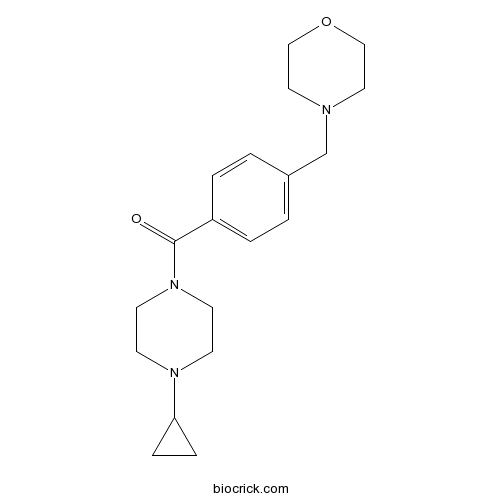Neuroscience
Neurons communicate with each other, effector organs and sensory organs through the neurotransmitter – receptor pathway at synapses. Neurotransmitters can be divided into 4 major groups: 1. Amino acids (glumate, aspartate, serine, glycine and GABA); 2. Monoamines (norepinephrine, epinephrine, dopamine, histamine, and serotonin); 3. Peptides (opioid peptides, substance P, somatostatin); and 4. Others (acetylcholine, NO, nucleosides).
Products for Neuroscience
- AChR(52)
- Histamine Receptor(89)
- Dopamine Receptor(114)
- Histamine(3)
- AChE(3)
- SSRIs(8)
- P2X7 receptor(4)
- 5-HT Receptor(238)
- Nicotinic Receptor(61)
- Amyloid β(20)
- Muscarinic Receptor(38)
- Alzheimer(3)
- COX(44)
- GluR(115)
- Neuroscience Peptides(10)
- Substance P/NK1 Receptor(21)
- P2 Receptor(2)
- BACE(3)
- Gap Junction(8)
- CGRP(3)
- DAPK(1)
- GABA Receptor(103)
- NMDA(1)
- mPEGS-1(1)
- Cat.No. Product Name Information
-
BCC6113
LPYFD-NH2

-
BCC4425
Lornoxicam
Lornoxicam, a COX-1 and COX-2 inhibitor, is a new nonsteroidal anti-inflammatory drug (NSAID).
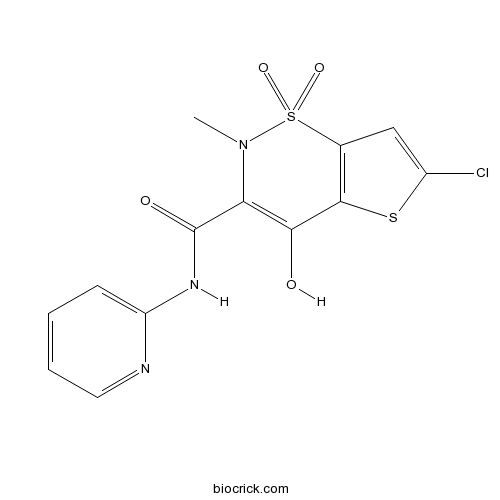
-
BCC5978
α-Conotoxin PnIA

-
BCC3808
Meloxicam (Mobic)
Meloxicam is a non-steroidal antiinflammatory agent, inhibits COX activity, with IC50s of 0.49 µM and 36.6 µM for COX-2 and COX-1, respectively.
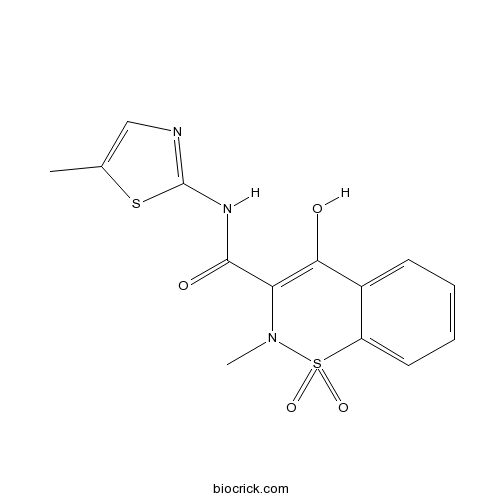
-
BCC6605
(S)-3-Hydroxyphenylglycine
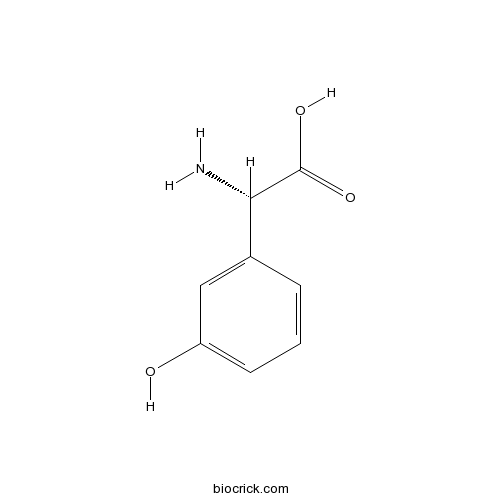
-
BCC4459
Amisulpride
Amisulpride is a dopamine D2/D3 receptor antagonist with Kis of 2.8 and 3.2 nM for human dopamine D2 and D3, respectively.
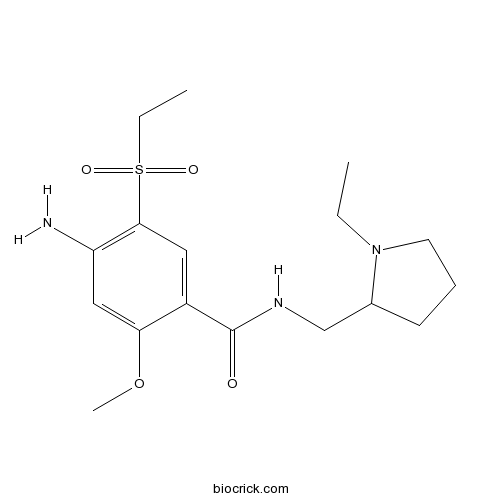
-
BCC6601
(RS)-4-Carboxyphenylglycine
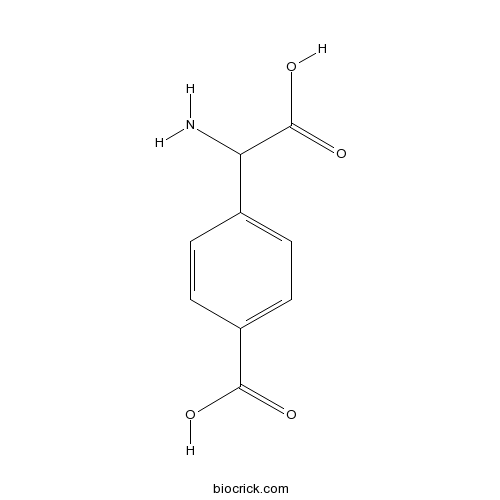
-
BCC6844
Remoxipride hydrochloride
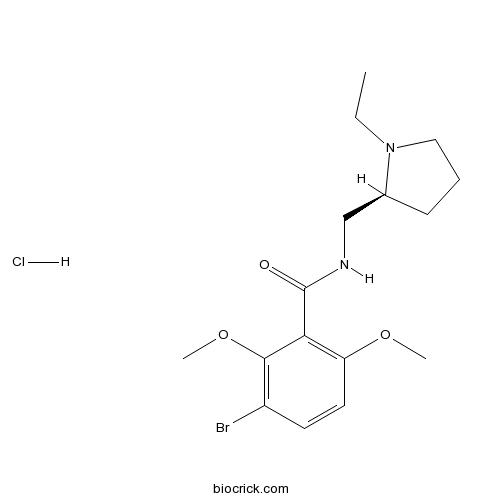
-
BCC6558
S-Sulfo-L-cysteine sodium salt
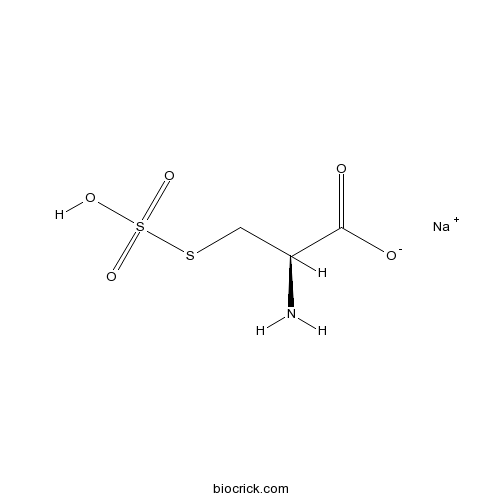
-
BCC5050
Ketanserin
Ketanserin is a selective 5-HT receptor antagonist. Ketanserin also blocks hERG current (IhERG) in a concentration-dependent manner (IC50=0.11 μM).
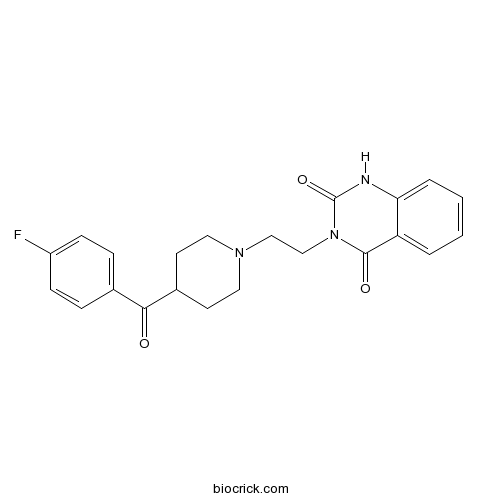
-
BCC5989
ACV 1

-
BCC5190
Ketorolac
Ketorolac is a non-steroidal anti-inflammatory agent, acting as a nonselective COX inhibitor, with IC50s of 20 nM for COX-1 and 120 nM for COX-2.
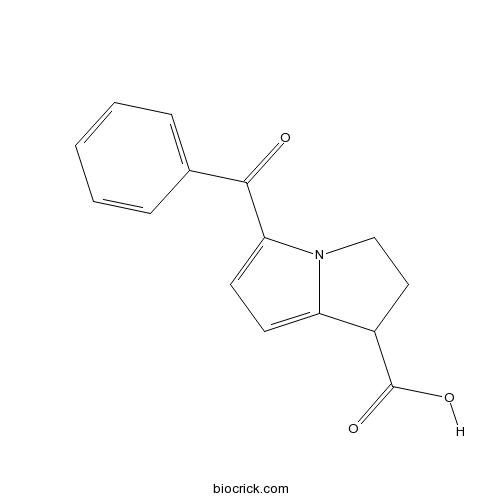
-
BCC4431
Ketorolac tromethamine salt
Ketorolac tromethamine salt (RS37619 tromethamine salt) is a non-steroidal anti-inflammatory agent, acting as a nonselective COX inhibitor, with IC50s of 20 nM for COX-1 and 120 nM for COX-2.
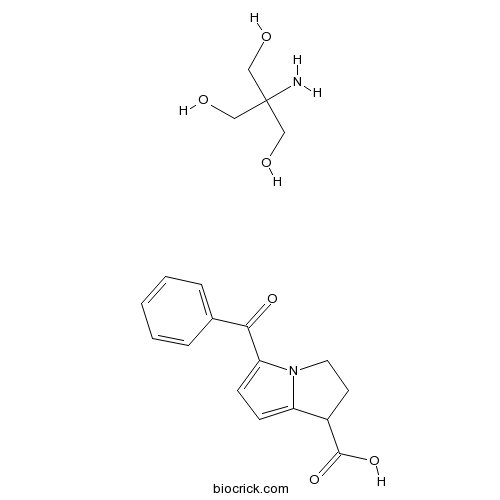
-
BCC7252
SKF 83822 hydrobromide
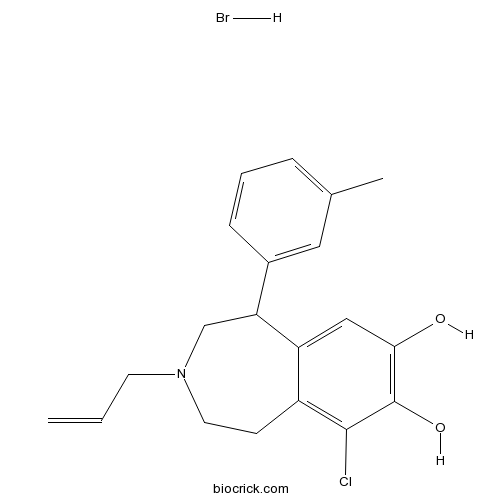
-
BCC3745
Carbenoxolone disodium
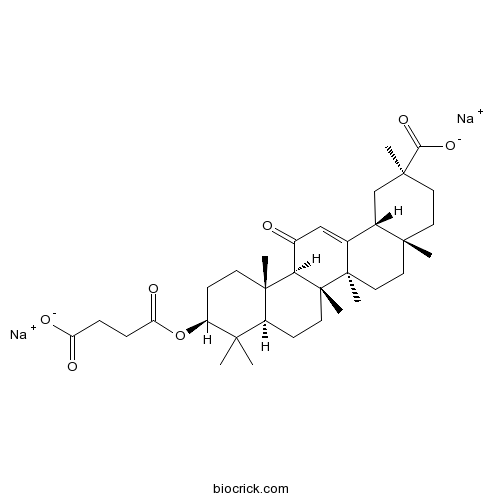
-
BCC4442
Zaltoprofen
Zaltoprofen(CN100) is an inhibitor of COX for treatment of arthritis.
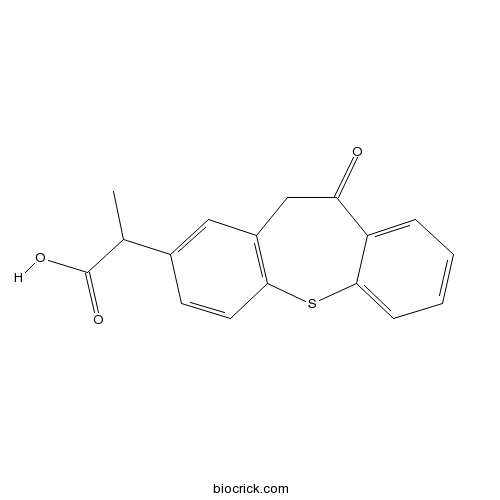
-
BCC7165
Nemonapride
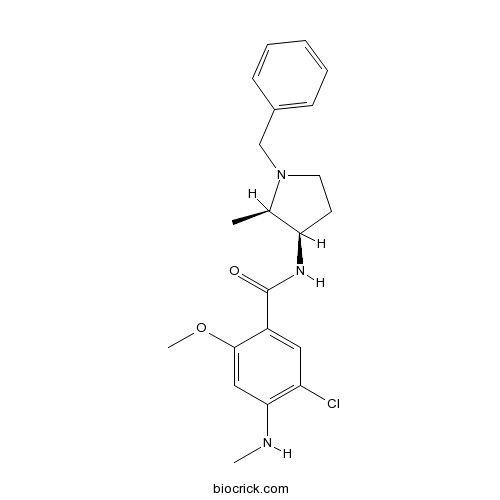
-
BCC6075
EHT 1864
EHT 1864 is an inhibitor of Rac family small GTPases. EHT 1864 directly binds and impairs the ability of this small GTPase to engage critical downstream effectors required for growth transformation. The Kd values are 40, 50, 60, and 230 nM for Rac1, Rac1b, Rac2 and Rac3, respectively. EHT 1864 also potently inhibits other Rac-dependent transformation processes, Tiam1- and Ras-mediated growth transformation. EHT 1864 prevents Aβ 40 and Aβ 42 production in vivo.
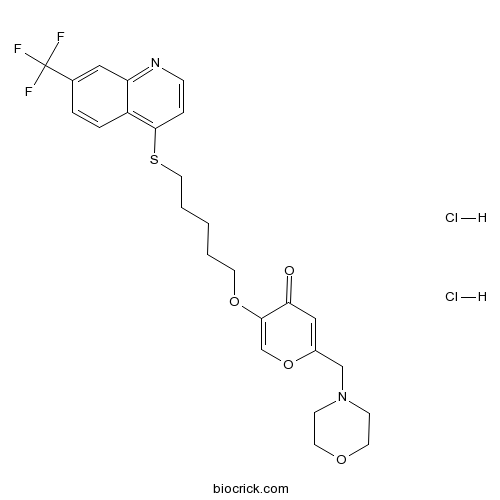
-
BCC6700
(S)-(+)-α-Methylhistamine dihydrobromide
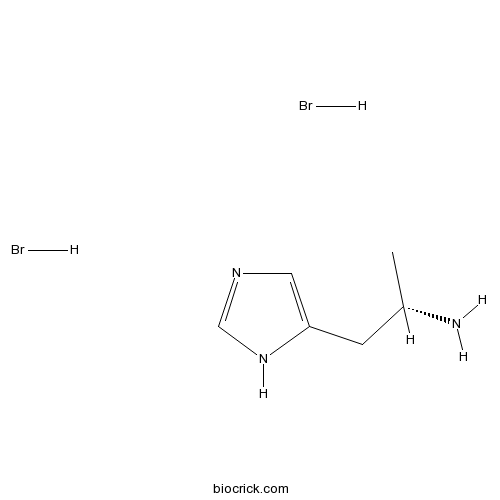
-
BCC6616
4-Acetyl-1,1-dimethylpiperazinium iodide
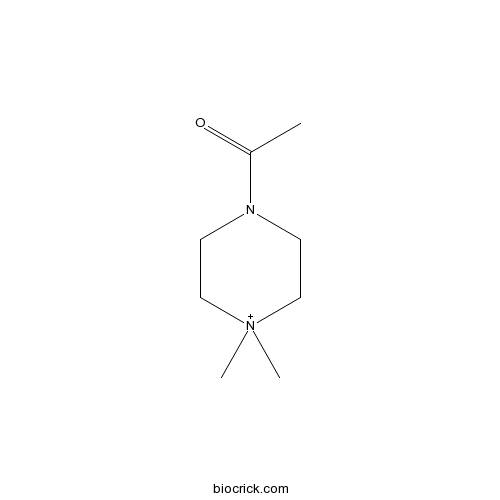
-
BCC6171
ADX 10059 hydrochloride
Negative allosteric modulator at mGlu5
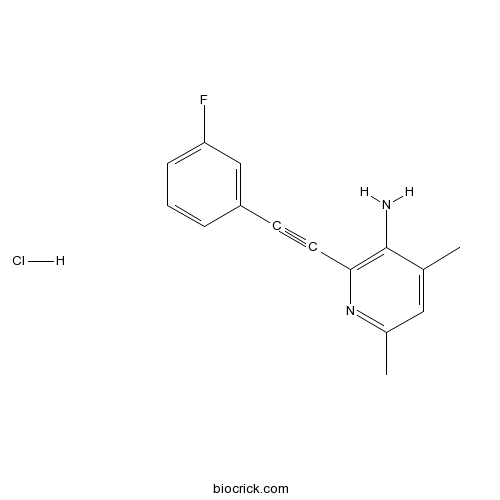
-
BCC6756
7-Hydroxy-DPAT hydrobromide
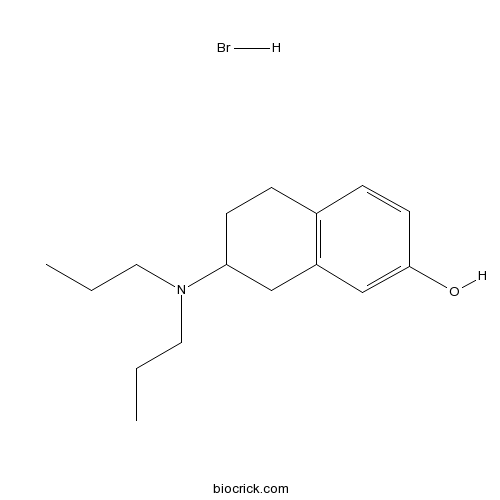
-
BCC6681
8-Hydroxy-DPAT hydrobromide
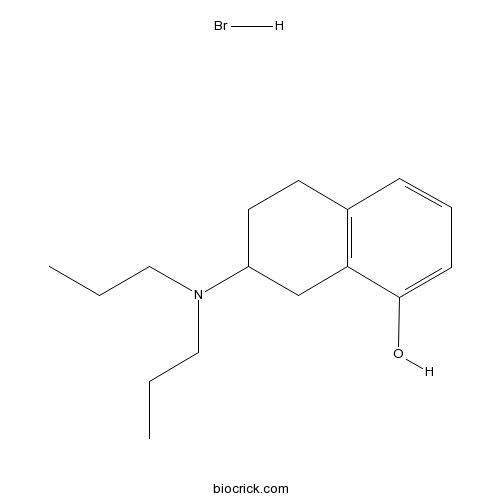
-
BCC5381
GBR 12935
GBR 12935 is a potent, and selective dopamine reuptake inhibitor.
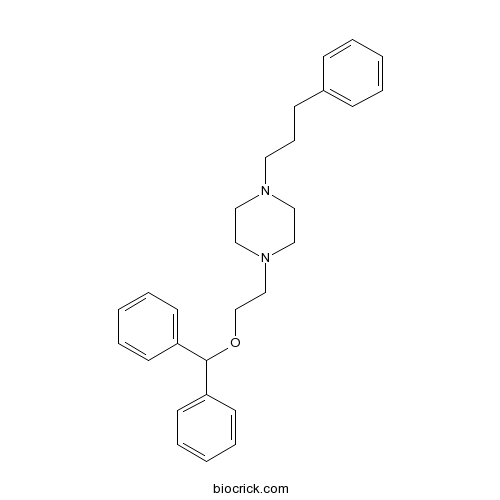
-
BCC4529
Famotidine
Famotidine (MK-208) is a competitive histamine H2-receptor antagonist. Its main pharmacodynamic effect is the inhibition of gastric secretion.
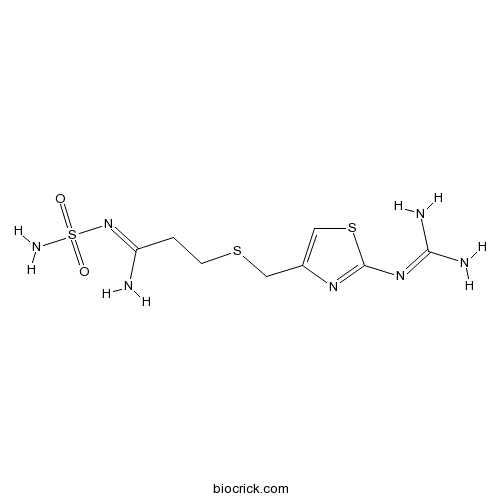
-
BCC4522
Nizatidine
Nizatidine is a histamine H2 receptor antagonist with low toxicity that inhibits gastric acid secretion.
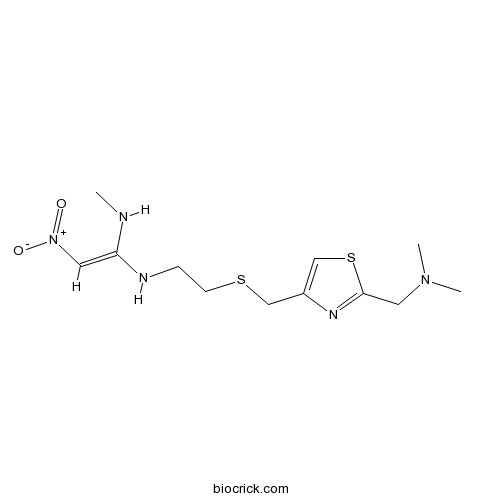
-
BCC4591
MK-801 (Dizocilpine)
Dizocilpine (MK-801), a potent anticonvulsant, is a selective and non-competitive NMDA receptor antagonist, with a Kd of 37.2 nM in rat brain membranes. Dizocilpine acts by binding to a site located within the NMDA associated ion channel and thus prevents Ca2+ flux.
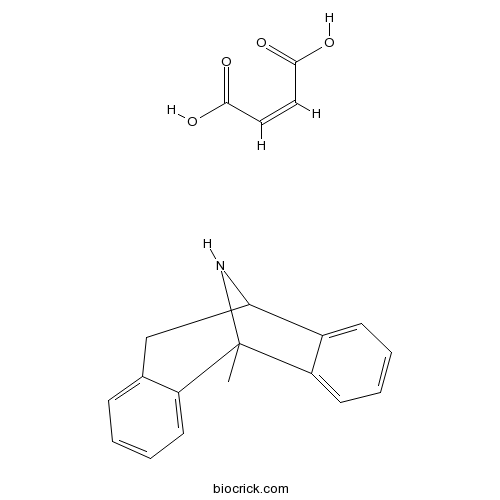
-
BCC4504
Nefiracetam
Nefiracetam is a GABAergic, cholinergic, and monoaminergic neuronal systems enhancer for Ro 5-4864-induced convulsions.
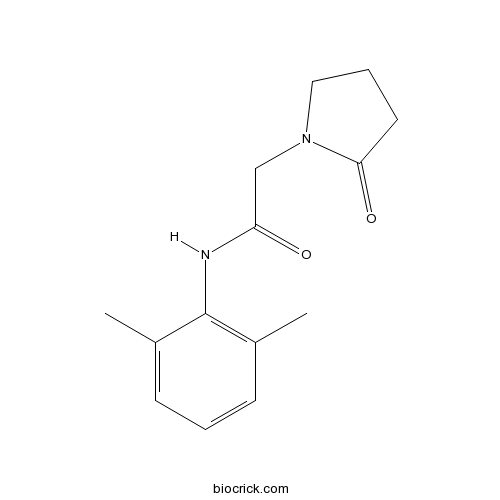
-
BCC7028
MG 624
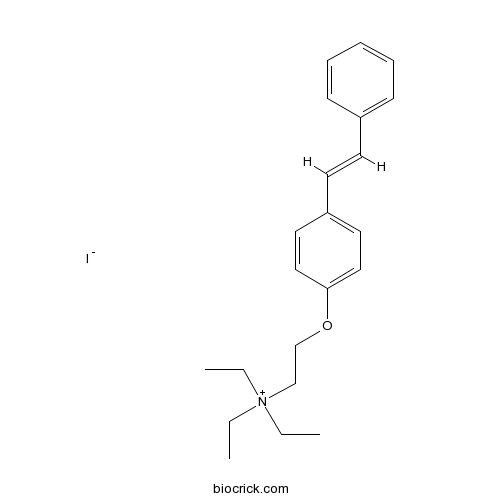
-
BCC1009
Beta-Lipotropin (1-10), porcine
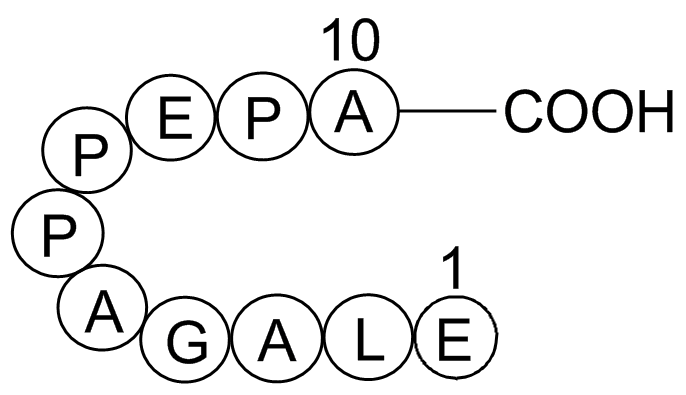
-
BCC6929
(R)-(+)-8-Hydroxy-DPAT hydrobromide
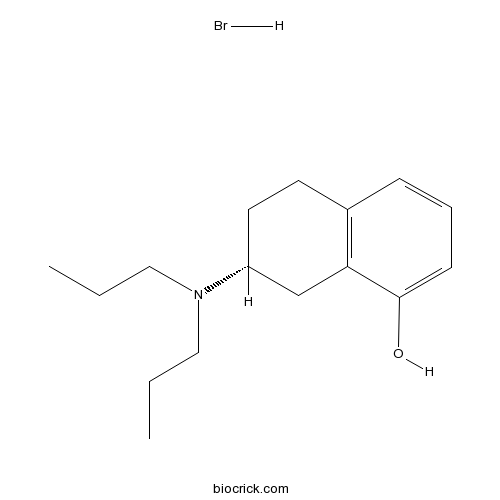
-
BCC1756
MK-0974
Telcagepant (MK-0974) is an orally active calcitonin gene-related peptide (CGRP) receptor antagonist with Kis of 0.77 nM and 1.2 nM for human and rhesus CGRP receptors, respectively.
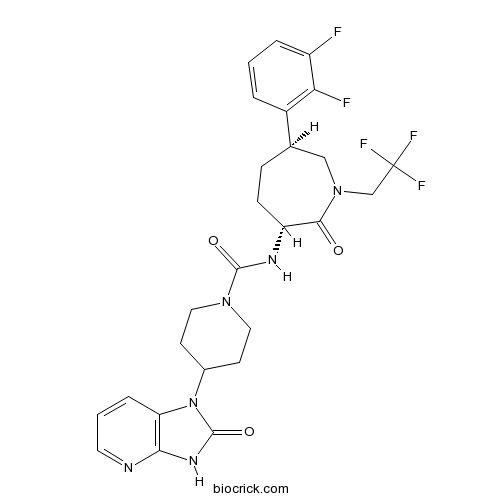
-
BCC7610
CDPPB
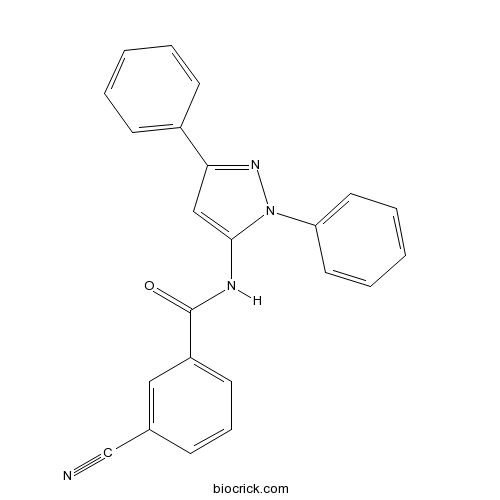
-
BCC5054
Paroxetine HCl
Paroxetine hydrochloride is a potent selective serotonin-reuptake inhibitor, commonly prescribed as an antidepressant and has GRK2 inhibitory ability with IC50 of 14 μM.
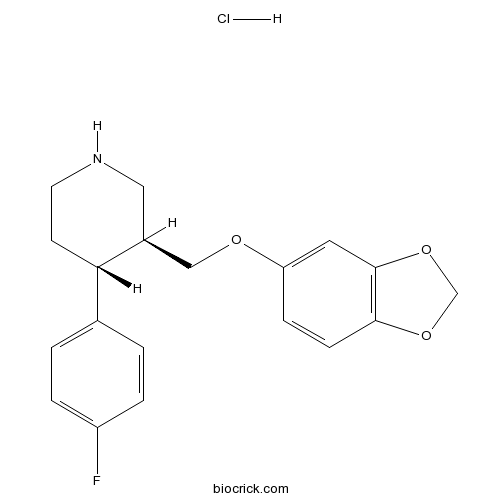
-
BCC6549
D-AP4
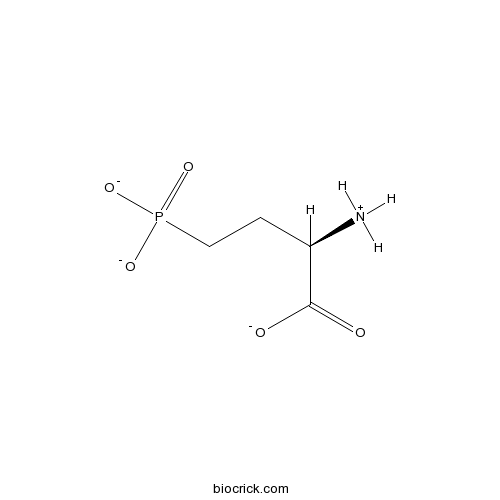
-
BCC1259
Flumazenil
Flumazenil is a competitive GABAA receptor antagonist, used in the treatment of benzodiazepine overdoses.
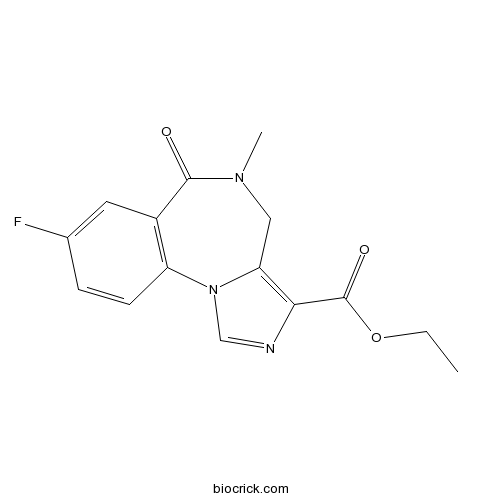
-
BCC7394
TC 1698 dihydrochloride
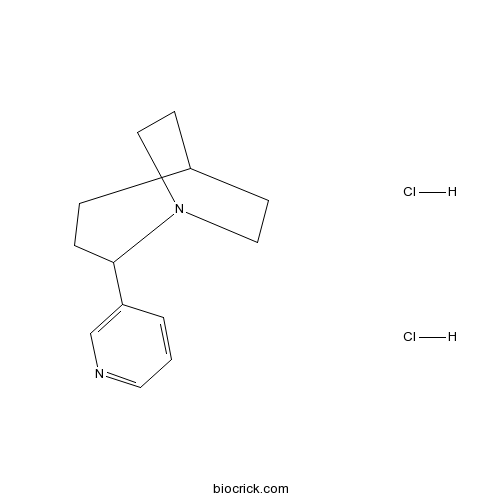
-
BCC6612
L-AP6
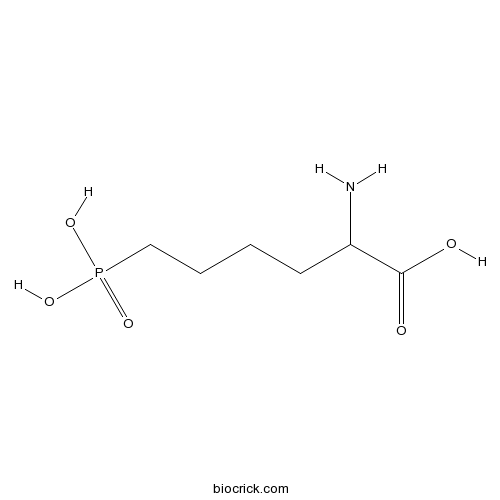
-
BCC4537
Azelastine HCl
Azelastine hydrochloride is a potent, second-generation, selective, histamine antagonist.
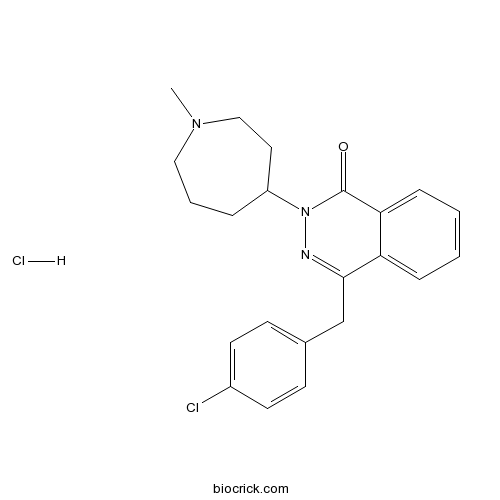
-
BCC5059
Sertraline HCl
Sertraline hydrochloride is an antidepressant of the selective serotonin reuptake inhibitor (SSRI) class.
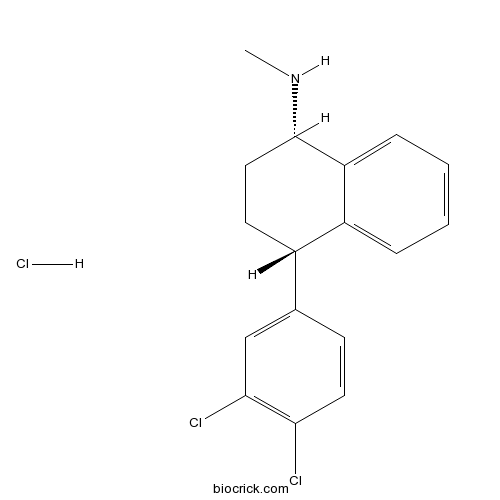
-
BCC1262
Loratadine
Loratadine (SCH-29851) is a selective inverse peripheral histamine H1-receptor agonist with an IC50 of >32 μM. Loratadine has anti-dengue-virus (DENV) activity.
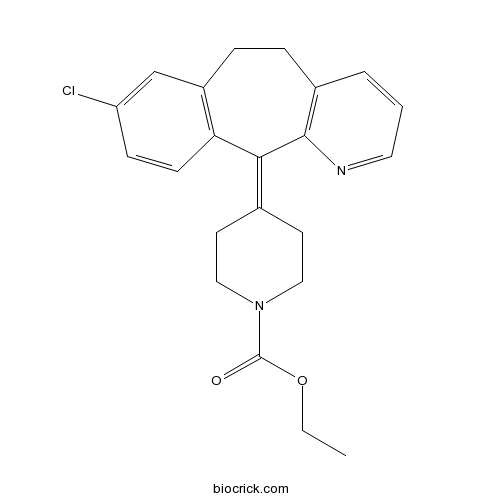
-
BCC4571
Homatropine Methylbromide
Homatropine methylbromide (Homatropine methobromide) is muscarinic AChR antagonist, inhibits endothelial and smooth muscle muscarinic receptors of WKY-E and SHR-E with IC50 of 162.5 nM and 170.3 nM, respectively.
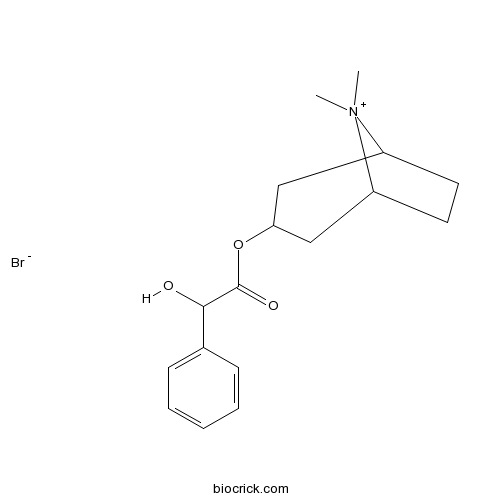
-
BCC4317
EUK 134
EUK 134, a synthetic superoxide dismutase (SOD)/catalase mimetic, exhibits potent antioxidant activities, and inhibits the formation of β-amyloid and related amyloid fibril.
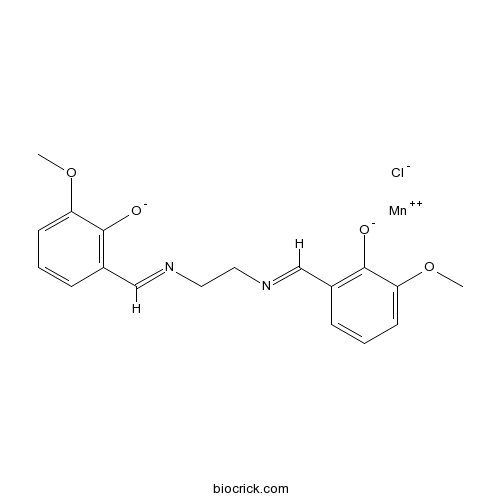
-
BCC4207
Cisapride
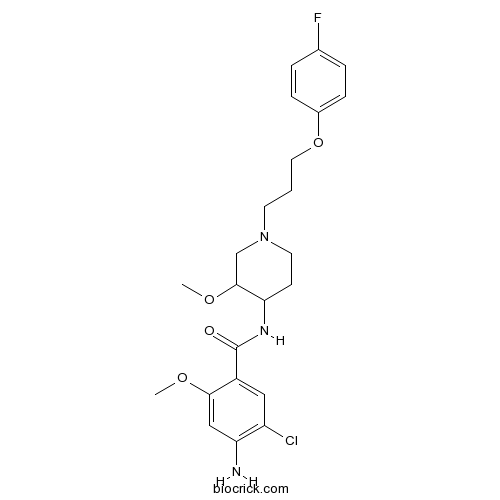
-
BCC6886
L-741,626
L-741626 is a selective D2 dopamine receptor antagonist, with the Ki values of 2.4, 100 and 220 nM for human D2, D3 and D4 receptors respectively.
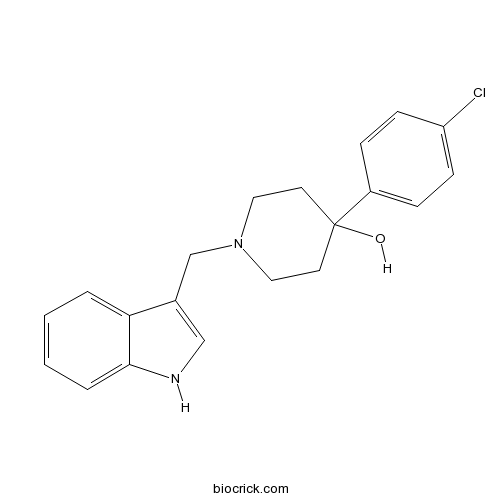
-
BCC4252
Amisulpride hydrochloride
Amisulpride hydrochloride is a dopamine D2/D3 receptor antagonist with Kis of 2.8 and 3.2 nM for human dopamine D2 and D3, respectively.
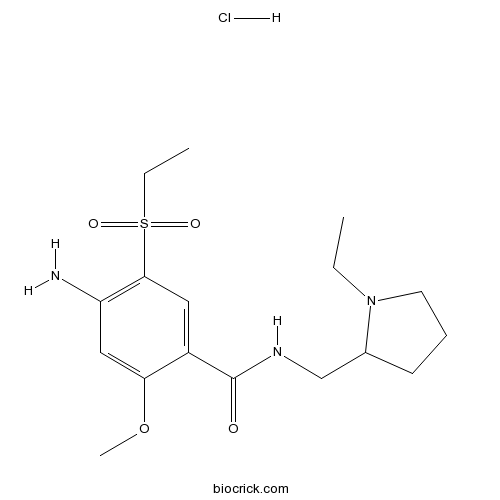
-
BCC5276
Cabergoline
Cabergoline is an ergot derived-dopamine D2-like receptor agonist that has high affinity for D2, D3, and 5-HT2B receptors (Ki=0.7, 1.5, and 1.2, respectively).
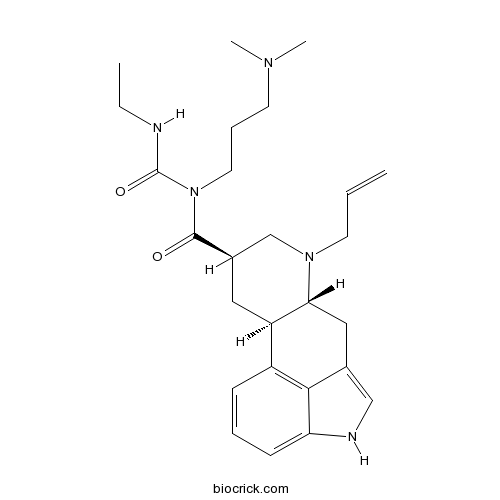
-
BCC7524
Methimepip dihydrobromide
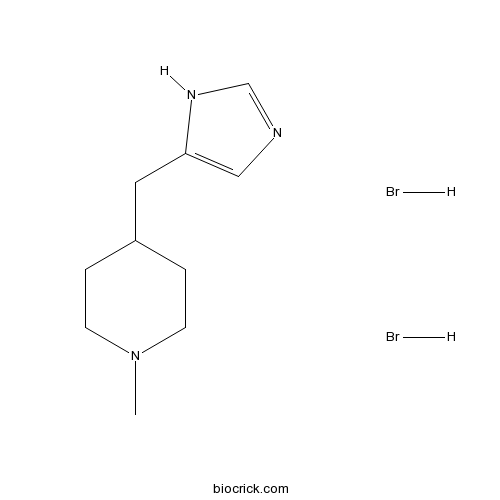
-
BCC4211
Agomelatine L(+)-Tartaric acid
Agomelatine L(+)-Tartaric acid (S-20098 L(+)-Tartaric acid) is a specific agonist of MT1 and MT2 receptors with Kis of 0.1, 0.06, 0.12, and 0.27 nM for CHO-hMT1, HEK-hMT1, CHO-hMT2, and HEK-hMT2, respectively. Agomelatine L(+)-Tartaric acid is a selective 5-HT2C receptor antagonist with pKis of 6.4 and 6.2 at native (porcine) and cloned, human 5-HT2C receptors, respectively.
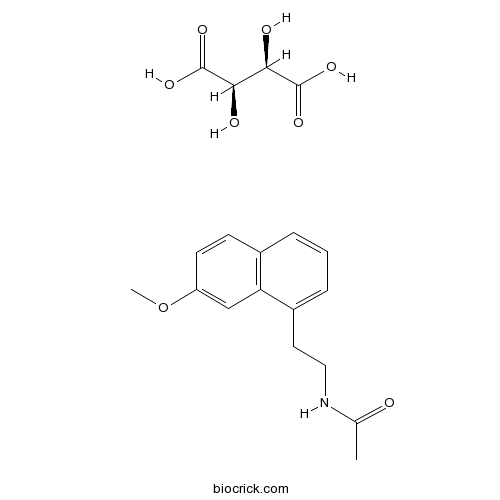
-
BCC7501
Mecamylamine hydrochloride
Mecamylamine hydrochloride is an orally active, nonselective, noncompetitive nAChR antagonist that can treat various neuropsychiatric disorders. Mecamylamine hydrochloride is originally used as a ganglionic blocker in treating hypertension. Mecamylamine hydrochloride can easily crosses the blood-brain barrier.
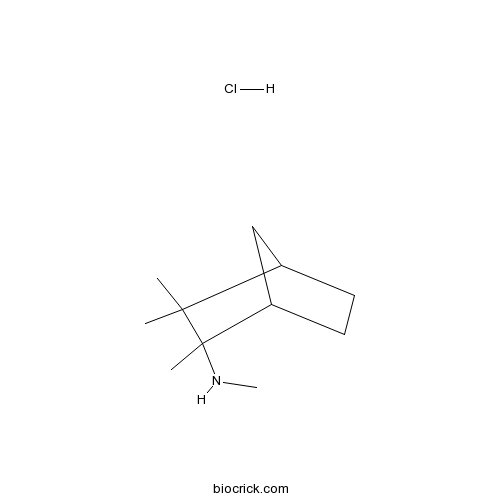
-
BCC1469
Cetirizine
Cetirizine, a second-generation antihistamine and the carboxylated metabolite of hydroxyzine, is a specific, orally active and long-acting histamine H1-receptor antagonist. Cetirizine marks antiallergic properties and inhibits eosinophil chemotaxis during the allergic response[1][2][3].
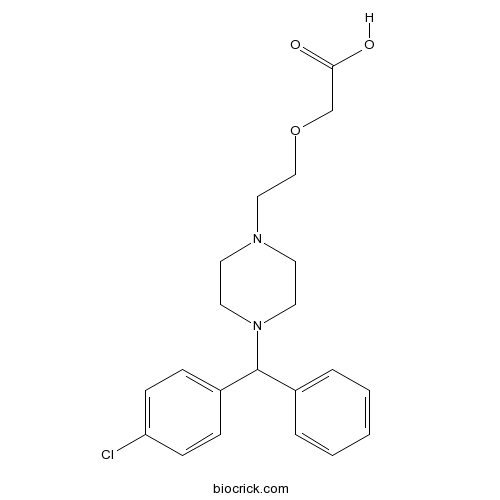
-
BCC4517
Cetirizine DiHCl
Cetirizine dihydrochloride, a second-generation antihistamine and the carboxylated metabolite of hydroxyzine, is a specific, orally active and long-acting histamine H1-receptor antagonist. Cetirizine dihydrochloride marks antiallergic properties and inhibits eosinophil chemotaxis during the allergic response[1][2][3].
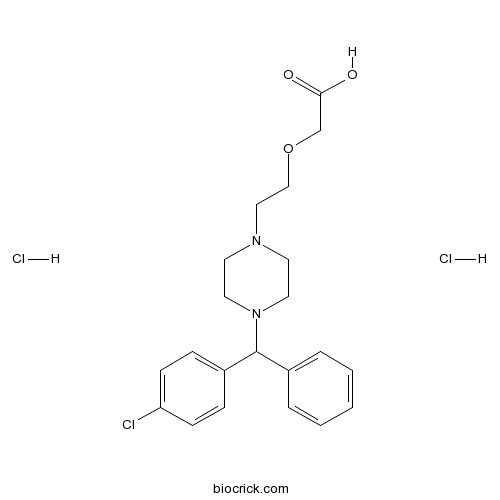
-
BCC1453
Cariprazine
Cariprazine is a novel antipsychotic drug candidate that exhibits high affinity for the D3 (Ki=0.085 nM) and D2 (Ki=0.49 nM) receptors, and moderate affinity for the 5-HT1A receptor (Ki=2.6 nM).
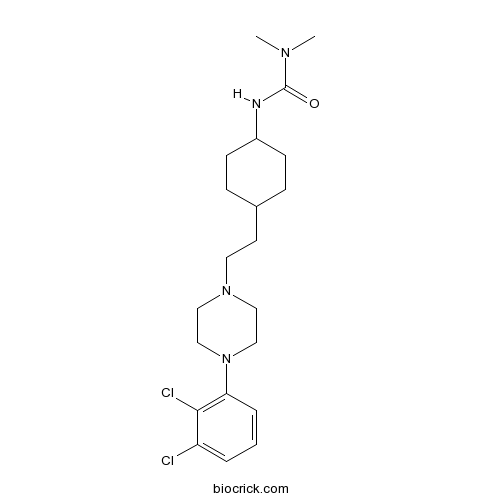
-
BCC7184
Raclopride
Raclopride is a dopamine D2/D3 receptor antagonist, which binds to D2 and D3 receptors with dissociation constants (Kis) of 1.8 nM and 3.5 nM, respectively, but has a very low affinity for D1 and D4 receptors with Kis of 18000 nM and 2400 nM, respectively.
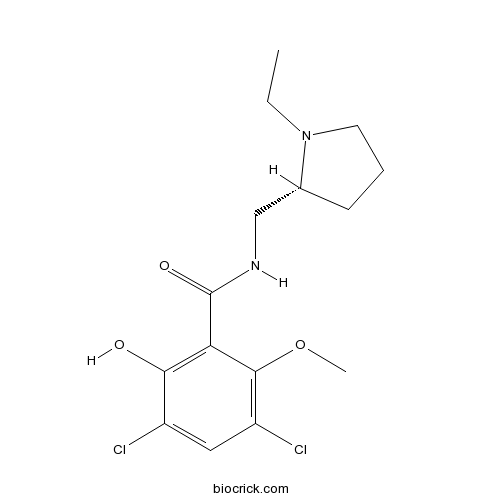
-
BCC5901
BTS 54-505 hydrochloride
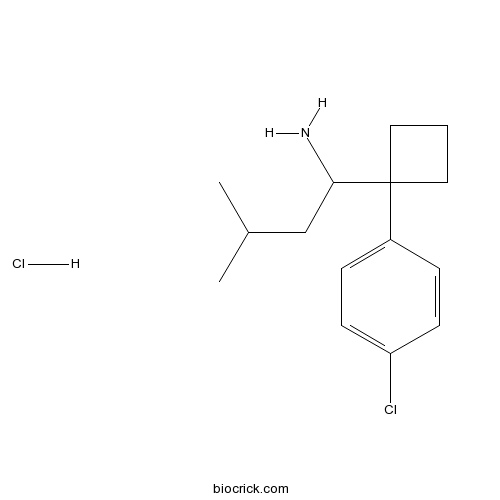
-
BCC5252
Sibutramine hydrochloride
Sibutramine hydrochloride is a novel 5-HT (serotonin) and noradrenaline reuptake inhibitor (SNRI).
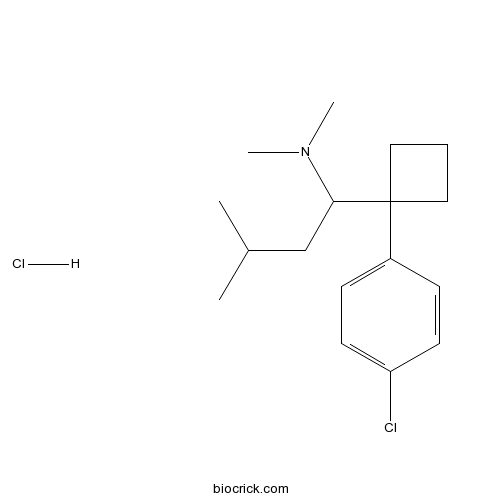
-
BCC6808
ICI 162,846
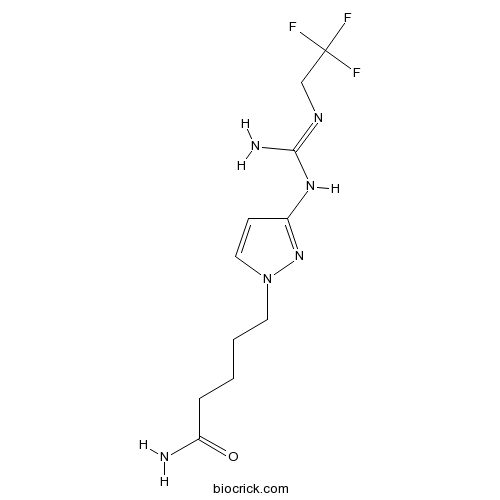
-
BCC5041
Lorcaserin HCl
Lorcaserin (Hydrochloride) is a selective full agonist of human 5-HT2C receptor with Ki of 15 nM.
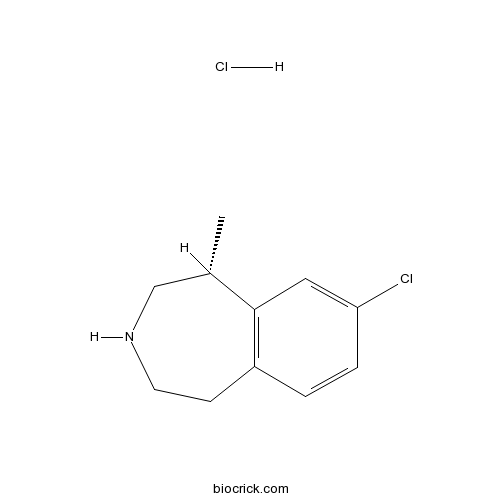
-
BCC7920
A 582941
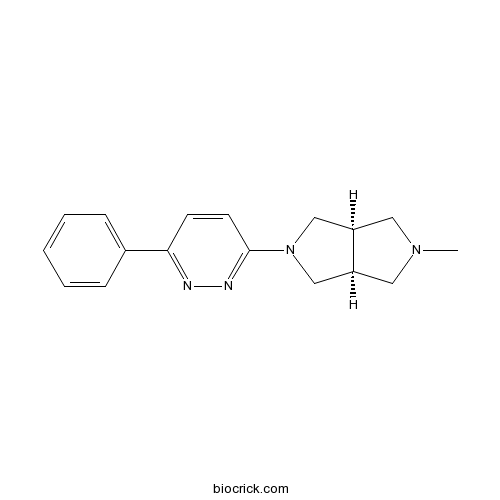
-
BCC7360
TMPH hydrochloride
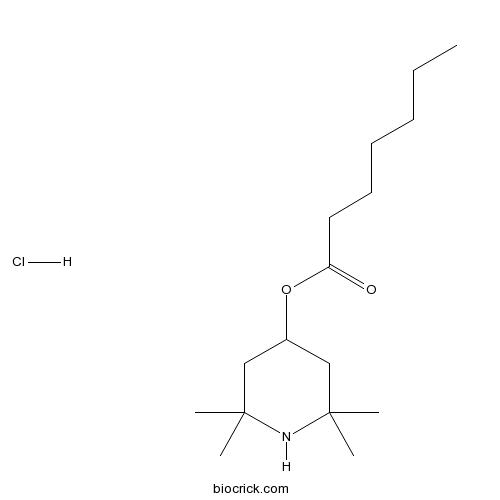
-
BCC6600
(S)-4-Carboxy-3-hydroxyphenylglycine
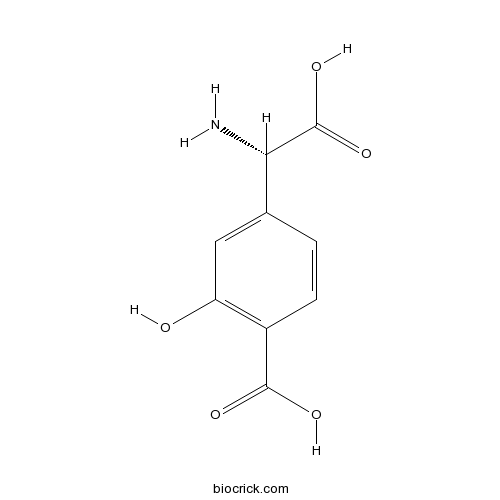
-
BCC4598
ADX-47273
ADX-47273 is a positive allosteric modulator selective for the metabotropic glutamate receptor subtype mGluR5(EC50=170 nM).
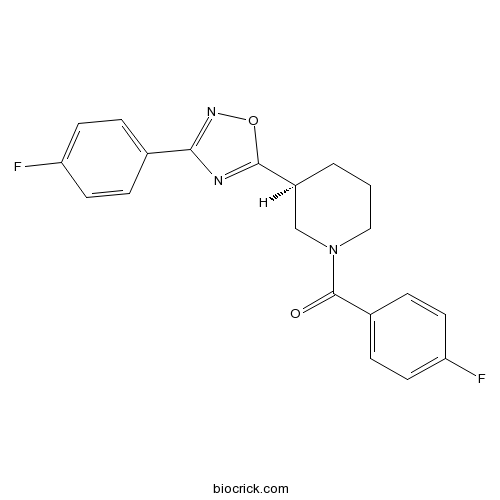
-
BCC7623
(±)-LY 395756
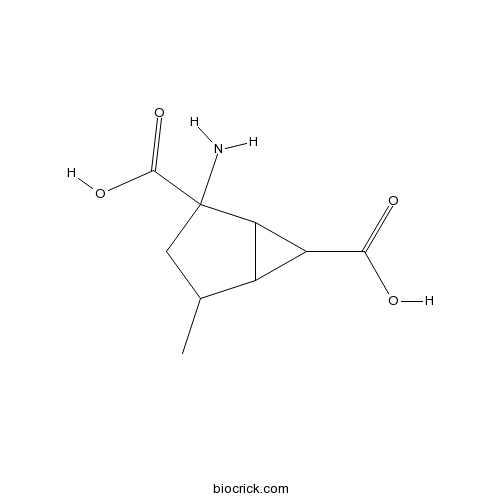
-
BCC6747
(+)-AJ 76 hydrochloride
Antagonist; preferential action at D2-like autoreceptors
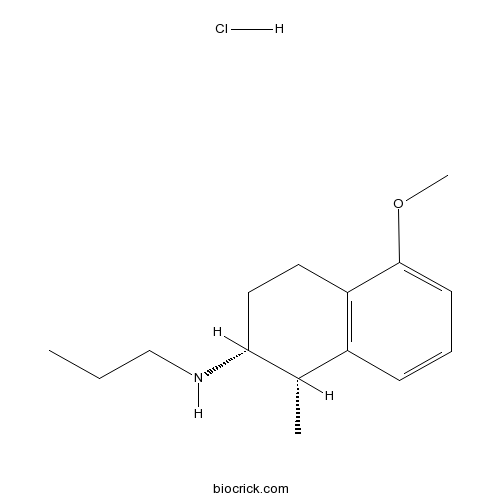
-
BCC2068
Zaltidine
Zaltidine(CP-57361) is a H2-receptor antagonist, which has the antisecretory action.
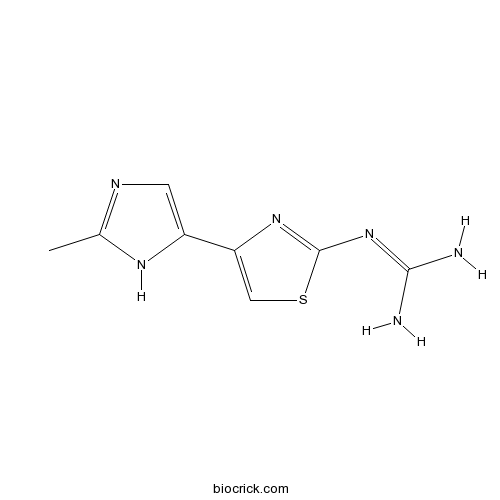
-
BCC2476
Asenapine
Asenapine maleate is a 5-HT (1A, 1B, 2A, 2B, 2C, 5A, 6, 7) and D2 antagonist with Ki values of 0.03-4.0 nM, 1.3nM, respectively, and an antipsychotic.
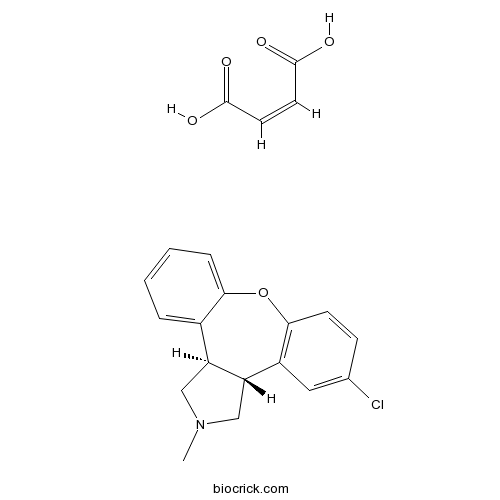
-
BCC7824
CBiPES hydrochloride
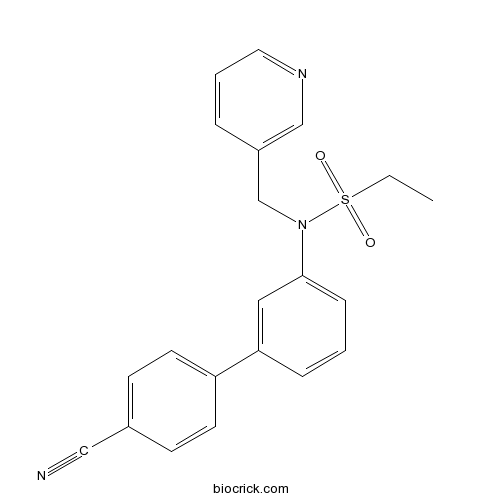
-
BCC6917
(-)-Quinpirole hydrochloride
Quinpirole Hydrochloride ((-)-LY 171555) is a high-affinity agonist of dopamine D2/D3 receptor.
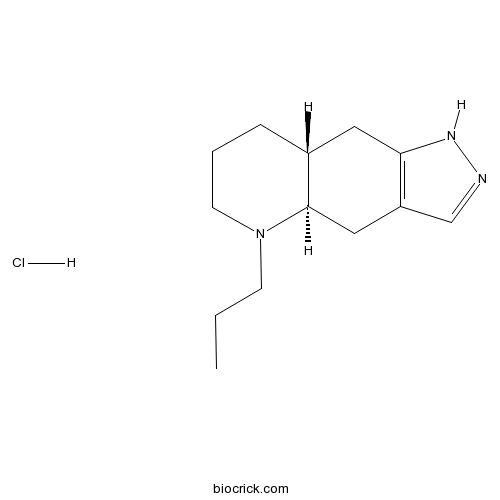
-
BCC6200
A 844606
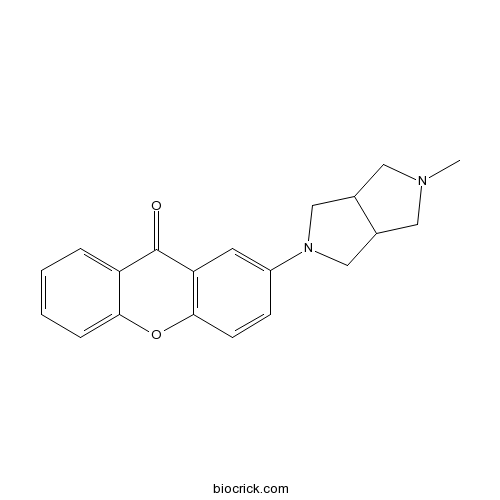
-
BCC1322
A-740003
A-740003 is a potent, selective and competitive P2X7 receptor antagonist with IC50 values are 18 and 40 nM for rat and human P2X7 receptors, respectively.
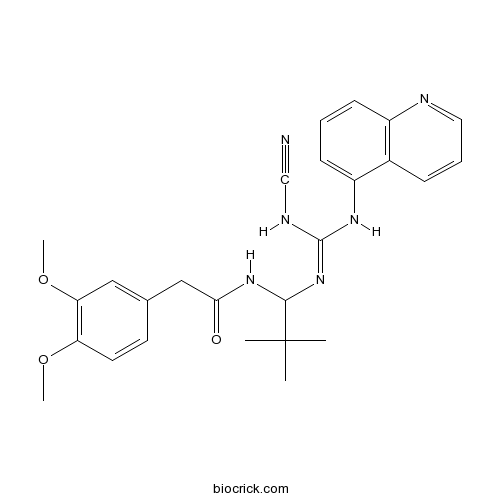
-
BCC6331
Methoxy-X04
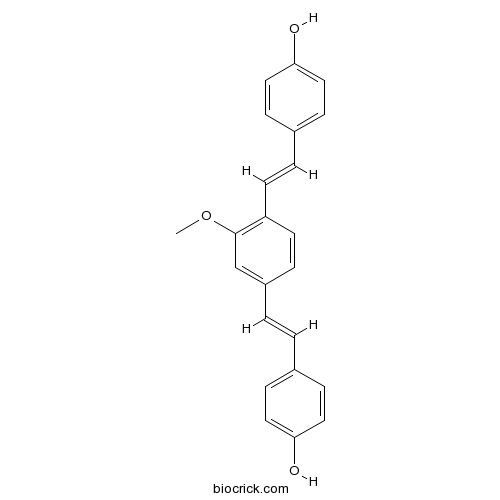
-
BCC5695
L-745,870 trihydrochloride
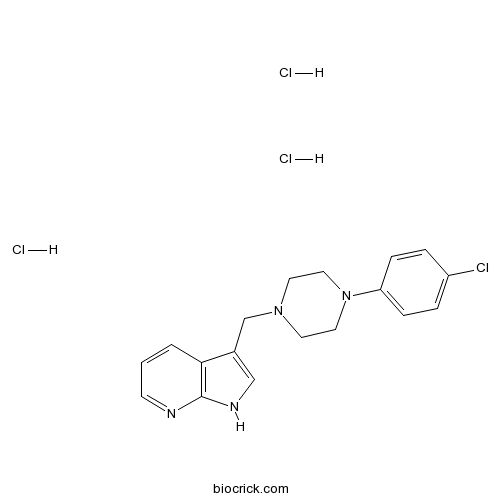
-
BCC4209
PRX-08066
PRX-08066 is a selective 5-hydroxytryptamine receptor 2B (5-HT2BR, IC50= 3.4 nM) antagonist that causes selective vasodilation of pulmonary arteries.
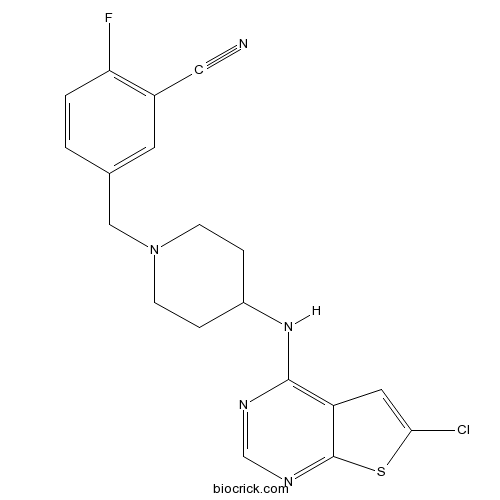
-
BCC1165
PRX-08066 Maleic acid
PRX-08066 Maleic acid is a selective 5-HT2B receptor antagonist with IC50 of 3.4 nM, prevents the severity of pulmonary arterial hypertension in the MCT rat model. Phase 2.
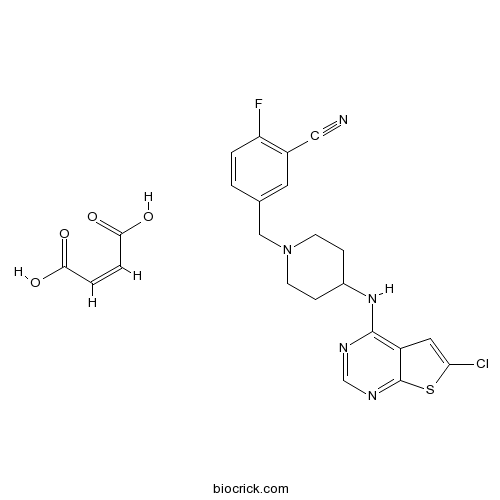
-
BCC7849
BINA
Biphenylindanone A (BINA) is a selective human mGluR2 (hmGluR2) potentiator for the treatment of many neurological disorders.
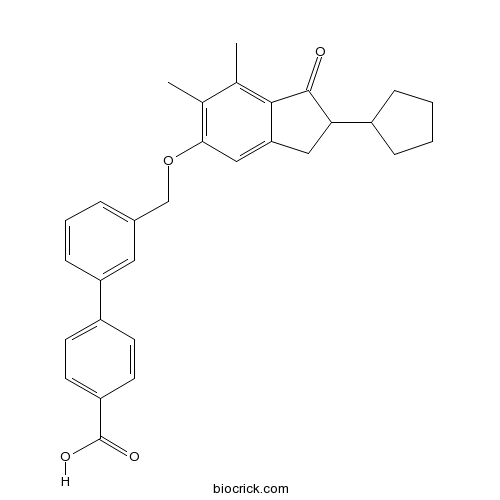
-
BCC7821
Colivelin
Colivelin is a brain penetrant neuroprotective peptide and a potent activator of STAT3, suppresses neuronal death by activating STAT3 in vitro. Colivelin exhibits long-term beneficial effects against neurotoxicity, Aβ deposition, neuronal apoptosis, and synaptic plasticity deficits in neurodegenerative disease. Colivelin has the potential for the treatment of alzheimer's disease and ischemic brain injury

-
BCC5665
(R)-(-)-α-Methylhistamine dihydrobromide
(R)-(-)-α-Methylhistamine dihydrobromide is a potent and selective H3 histamine receptor agonist with a Kd of 50.3 nM. (R)-(-)-α-Methylhistamine dihydrobromide can cross the blood-brain barrier, and can enhance memory retention, attenuates memory impairment in rats.
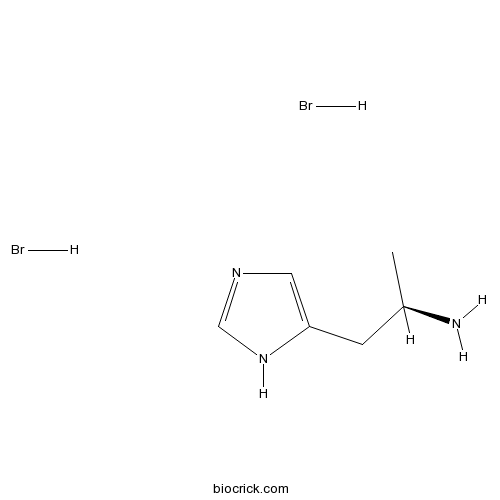
-
BCC2022
Umeclidinium bromide
Umeclidinium bromide is a novel mAChR antagonist. The affinity (Ki) of Umeclidinium bromide for the cloned human M1-M5 mAChRs ranges from 0.05 to 0.16 nM.
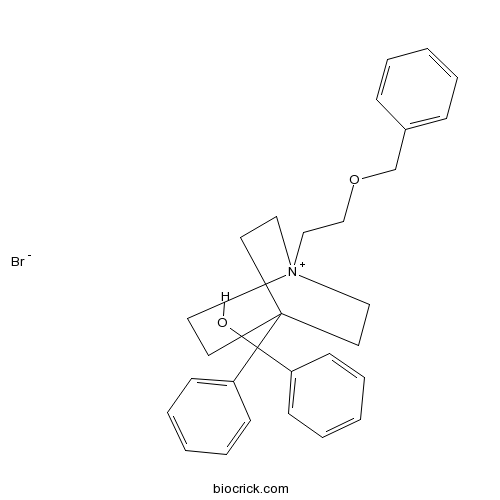
-
BCC7362
JNJ 10191584 maleate
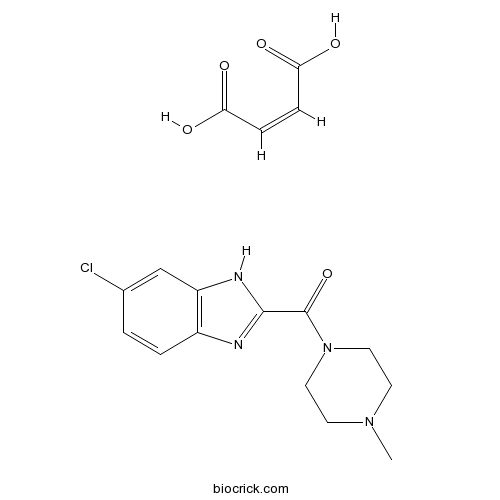
-
BCC7550
A 841720
Selective mGlu1 antagonist
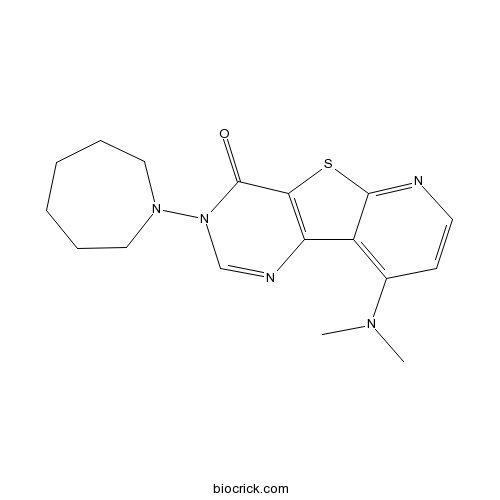
-
BCC4290
A 839977
A 839977 is a P2X7 selective antagonist; it blocks BzATP-evoked calcium influx at recombinant human, rat and mouse P2X7 receptors (IC50 values are 20 nM, 42 nM and 150 nM respectively) and reduces inflammatory and neuropathic pain in animal models; the antihyperalgesic effects of P2X7 receptor blockade are mediated by blocking the release of IL-1beta.
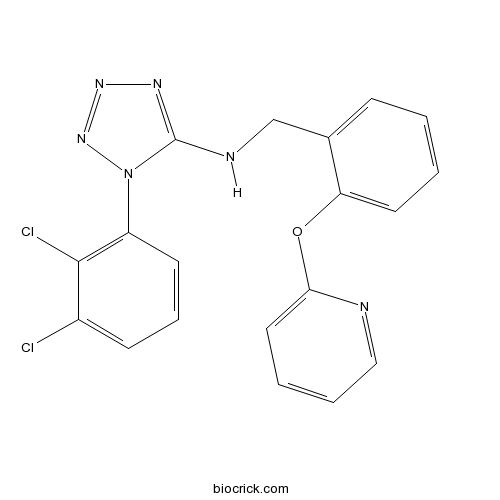
-
BCC6182
SEN 12333
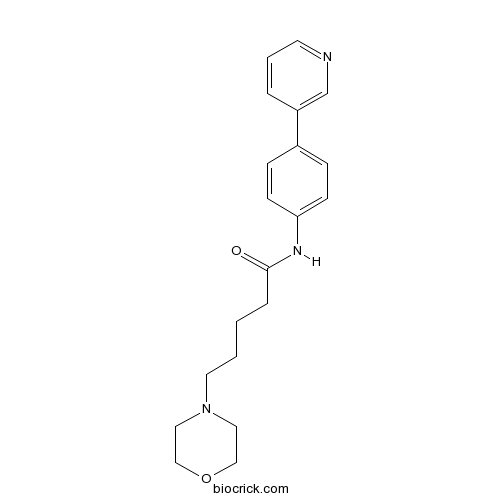
-
BCC6879
Isamoltane hemifumarate
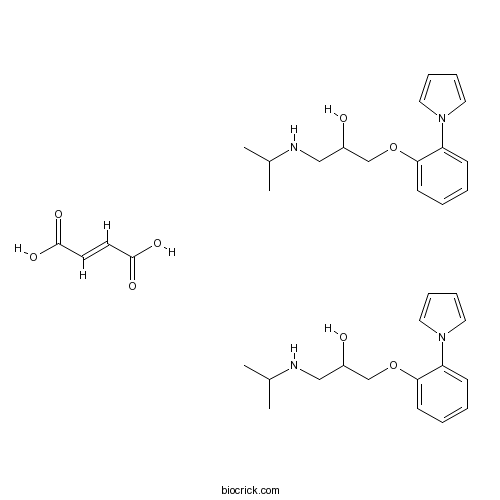
-
BCC5696
L-741,742 hydrochloride
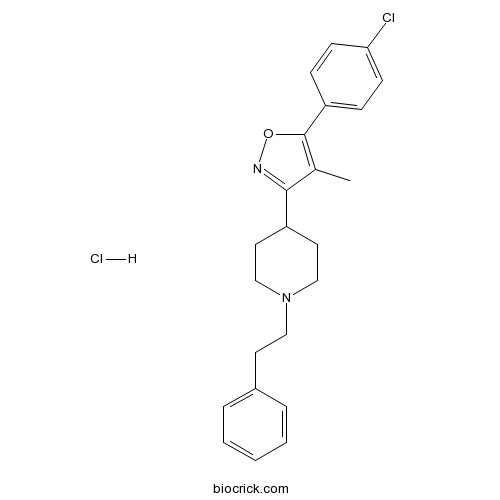
-
BCC4208
Tandospirone
Tandospirone(SM-3997) is a potent and selective 5-HT1A receptor partial agonist (Ki = 27 nM) that displays selectivity over SR-2, SR-1C, α1, α2, D1 and D2 receptors (Ki values ranging from 1300-41000 nM).
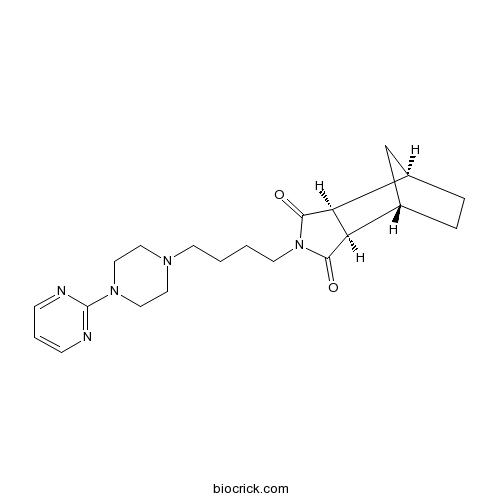
-
BCC7985
LY 2389575 hydrochloride
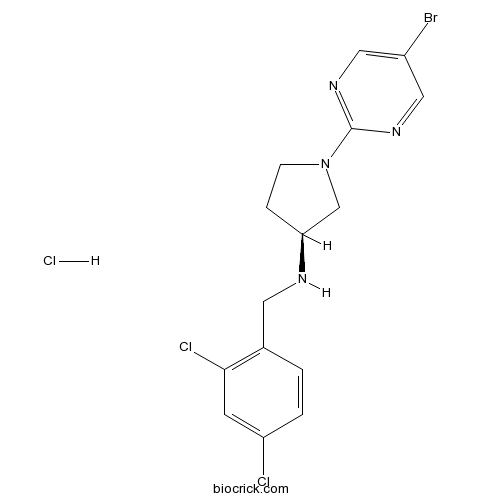
-
BCC5564
LY2119620
LY2119620 is a high-affinity muscarinic M2/M4 receptor agonist.
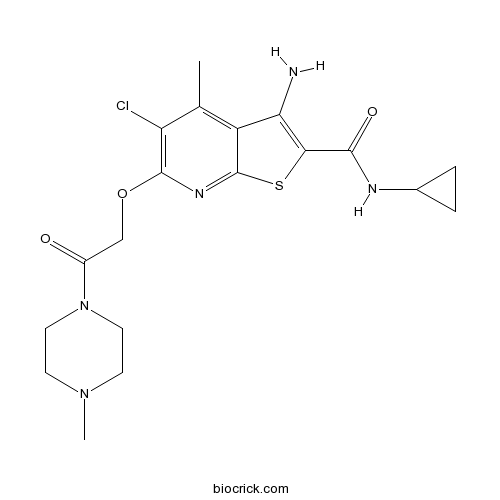
-
BCC1011
Adrenorphin, Free Acid

-
BCC7936
VU 29
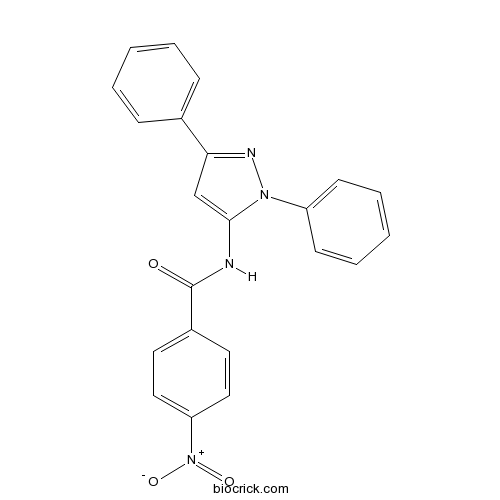
-
BCC7649
VU 1545
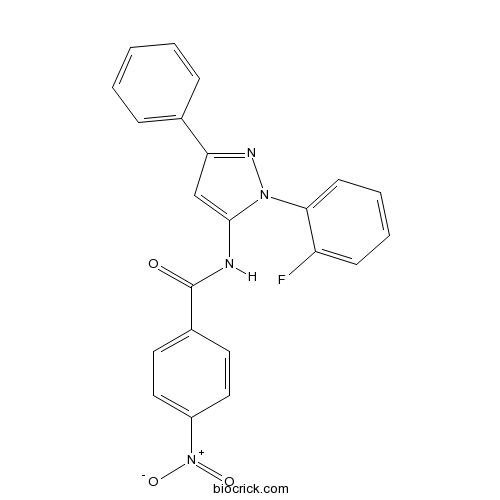
-
BCC1744
MF63
MF63 is a selective mPGES-1 inhibitor with an IC50 of 0.9 nM and 1.3 nM for pig mPGES-1 and human mPGES-1 enzyme, respectively.
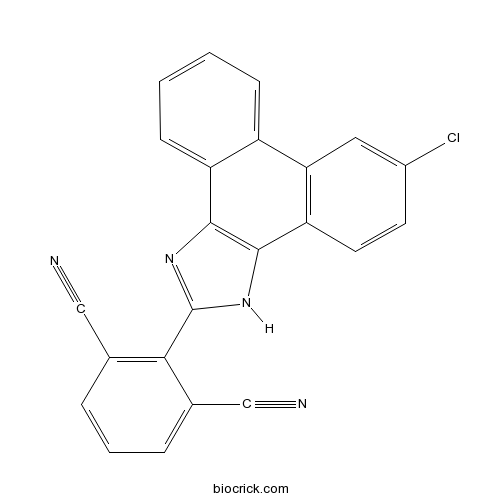
-
BCC5233
Aceclofenac
Aceclofenac is a non-steroidal anti-inflammatory drug (NSAID) analog of Diclofenac.
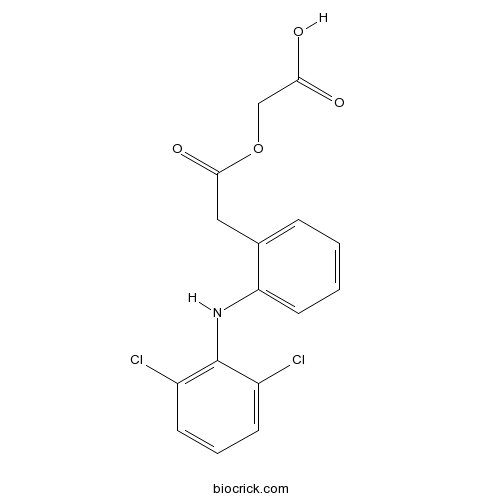
-
BCC1863
Pitolisant hydrochloride
Pitolisant hydrochloride is a potent and selective nonimidazole inverse agonist at the recombinant human histamine H3 receptor (Ki=0.16 nM).
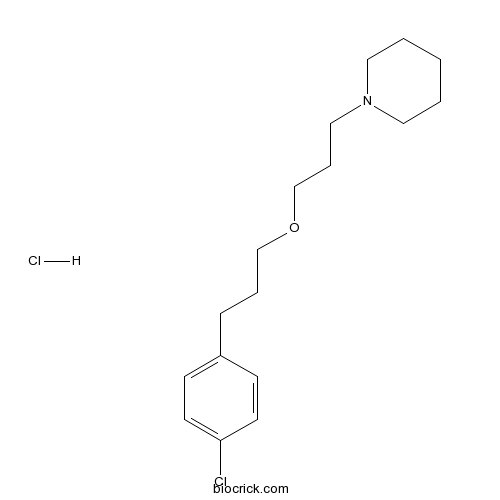
-
BCC5808
Spantide I

-
BCC7869
LY 2087101
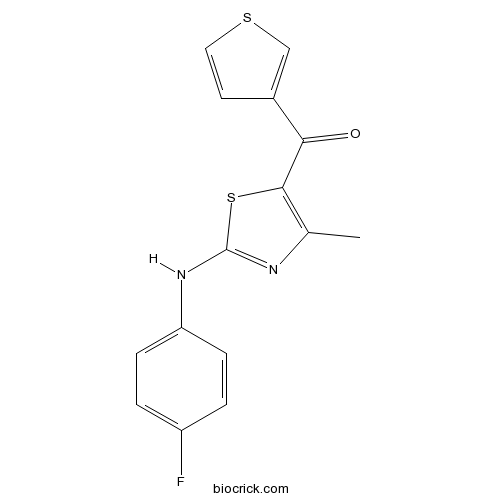
-
BCC4118
Brexpiprazole
Brexpiprazole (OPC-34712), an atypical antipsychotic drug, is a partial agonist of human 5-HT1A and dopamine receptor with Kis of 0.12 nM and 0.3 nM, respectively. Brexpiprazole is also a 5-HT2A receptor antagonist with a Ki of 0.47 nM.
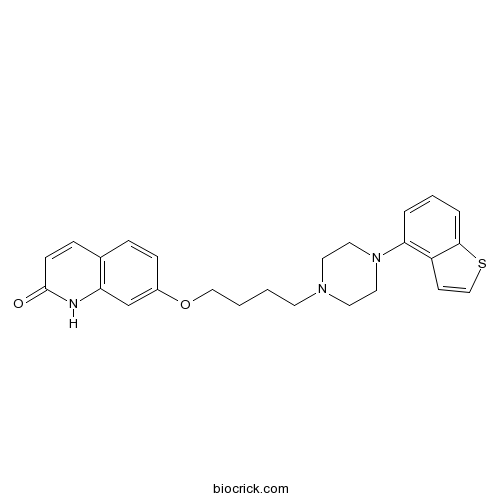
-
BCC7788
CCMI
CCMI is a potent and selective α7 nAChR-positive allosteric modulator, does not bind to or activate α7 nAChRs via the orthosteric site, and causes significant positive modulation of agonist-induced currents at α7 nAChRs. CCMI has potential in CNS diseases with cognitive dysfunction.
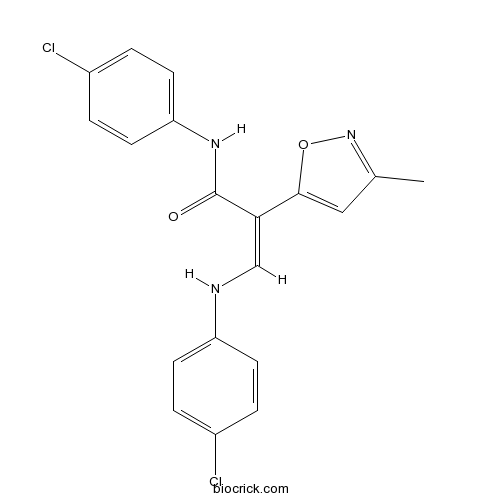
-
BCC5965
(±)-MDMA hydrochloride
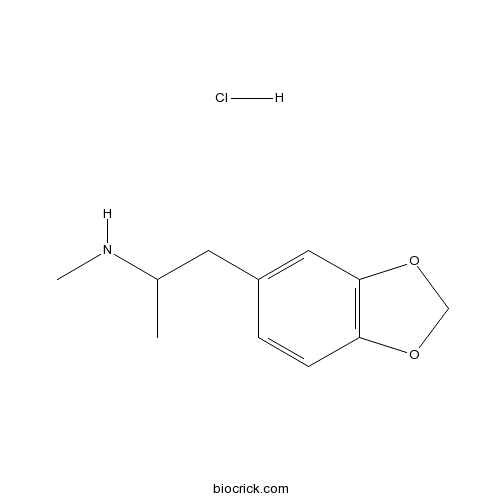
-
BCC4194
Milnacipran
Milnacipran is a serotonin-norepinephrine reuptake inhibitor (SNRI) used in the clinical treatment of fibromyalgia.
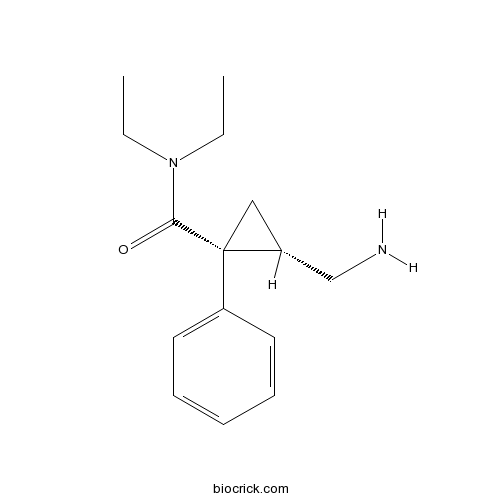
-
BCC1402
Bavisant
Bavisant (JNJ-31001074) is a highly selective, orally active antagonist of the human H3 receptor with a novel mechanism of action, involving wakefulness and cognition, with potential as a treatment for ADHD.
